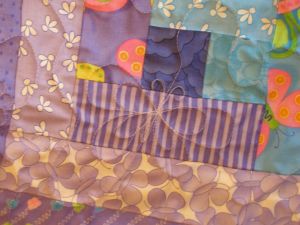I received a very useful rejection for a short story recently, which pointed out that my tale suffered from “white room syndrome”, ie the action could be taking place anywhere – or nowhere – due to the lack of detail of the setting. As often happens, once I became aware of it, I started seeing it everywhere – in stories I was critiquing for others, in the book I’m revising, even in published novels. (If you’ve ever read The Partner by John Grisham, you’ll know what I mean. It’s a fast-paced thriller with very little description of any kind.)
By coincidence, I was working on the lesson that covers settings in the course I’m doing, How to Revise Your Novel by Holly Lisle, when I got this rejection. For each setting, I had to fill in a page which included, among other things, listing what elements of the setting I had described in the scene. Before this exercise I would have said my settings were well described. My main characters, after all, are artists, so visuals are important to them. They notice details of colour and lighting. Or do they? Hmmm. Hope their favourite colour is white.
Yep, page after page came up empty. A “table”, not described, would be the only object mentioned in a scene set in a dining room, for instance. Yet in my head I had seen the tablecloth, the cutlery, the subdued lighting, everything. But none of it had made it into the story. I could draw you the floor plan of whole houses in this novel, but no one could ever guess it from what I’ve written. Not that I’d want to bore readers with floor plans, of course! I don’t even look at maps in fantasy novels. But I need to find a happy medium between the “nothing to see here” style of a John Grisham and the “five pages to describe the butcher’s shop window” of AS Byatt. (I love AS Byatt. But she has the skill to get away with it. I don’t.)
It’s interesting, though, isn’t it, how much work readers will do to flesh out a writer’s creation. I built pictures in my head while reading The Partner, despite the lack of description. Grisham said “courtroom” and my mind supplied the wood panelling, the rows of hard bench seats, the gowns and wigs, courtesy of all those Hollywood courtrooms I’ve seen. In fact the reason I read the Grisham book was that I’d heard he deliberately wrote very sparsely. He started off writing down the bones of his story, thinking to flesh it out later with descriptions and details. Eventually he decided to leave all that out, since people normally skipped over it anyway. I think he put it as “leaving out the boring bits”.
While I certainly wouldn’t condemn all description as “boring bits”, I know what he means. No one wants the story held up for big lumps of setting or long descriptions of what people are wearing or eating. I like descriptions in small, easily digested amounts – little “telling details” that individualise a character or place.
Probably it depends, too, on genre. Small details can play large roles in crime fiction. Descriptions of exotic alien places and customs are half the fun in fantasy and science fiction. I don’t read much romance, but I imagine loving descriptions of the hero and heroine’s charms could be a feature there.
What do you reckon? How much is too much, or not enough? And do you think the magical Goldilocks amount varies by genre?










